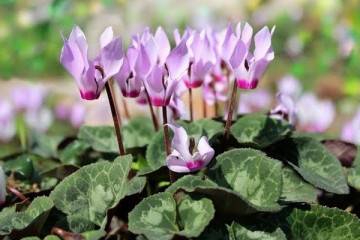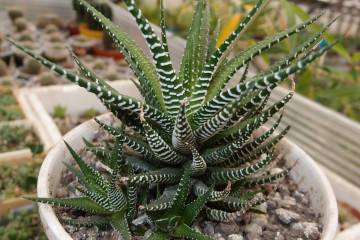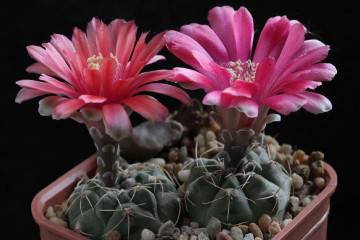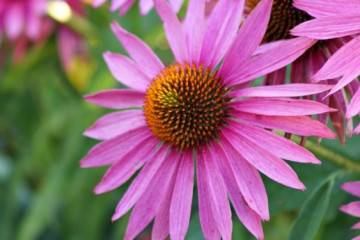Albizia Lankaran (Crimean acacia) and other species
Content:
People who have been to Crimea at least once have probably seen a tree with beautiful flowers, which outwardly resembles an acacia. But in fact, this amazing plant is not an acacia at all, but the Lankaran albicia - a favorite of gardeners and those who are delighted with bonsai.
Albizia Lankaran Pompadour
In the wild, an exotic tree can be found in the southern regions of Russia, Azerbaijan, India, and some Asian countries. In some rare cases, albition acclimatizes even in the Central zone of the Russian Federation, however, it is still recommended to grow the plant in greenhouses, and not in open ground.
Origin and appearance
This plant began its distribution over the territory of European states as early as the 18th century. thanks to one resident of Florence. His name was F. del Albizzi. It was this man who, in the distant 1740, introduced the Europeans to this amazing tree. In Latin, the name of the plant sounds like Albizia julibrissin, the second word can be translated as "silk flower".
Albitsia is a deciduous tree with low frost resistance. Botanists attribute it to the legume family (Moths), which includes more than 20 thousand of the most different species.
The average height of an adult plant is 12 m, and the diameter of its spreading crown reaches 9-10 m. The average life of a tree deserves special attention, it depends on the conditions of maintenance and on average varies from 50-100 years.
Albizia Pompadour has carved bright green leaf plates that are similar in appearance to both fern and acacia leaves. Their average length is 20 cm.
The tree bears fruit, its fruits are multi-seeded beans about 20 cm long. Initially, they have a green tint, but by autumn they change it to a light yellow or brownish tone.
The variety is light-requiring, prefers a high level of air humidity. The plant needs a well-drained loamy soil. Albizia does not tolerate low temperatures, and therefore it is not worth growing it in regions where the temperature at night drops below -15 ° С.
Fragrant flowers are the main decoration of albitsia. They are large enough, collected in panicles. They are characterized by a white or yellowish tint. The stamens can be white or pink and are thin and long.
Other types of albits
In addition to the variety called Pompadour, there are other types of albits. They differ from each other in height, color of petals.
Beam-flowered albicia (Albizia lophantha)
The homeland of this species is Australia. Bundle-flowered albitsia is a shrub or tree about 5 m high. The leaves of the plant are double-pinnate, their underside is pubescent.In the first order, there are about 8-10 pairs of leaves, in the second - 20-40. The flowers are yellow, medium in size, from 5 to 9 cm. Flowering begins in spring.
Albizia adianthifolia
This variety is found in natural conditions in Africa: from South to Tropical. The height of the tree reaches 40 m, its trunk is twisted. The wood is soft golden yellow. To grow such a tree, you need sandy soil. The plant will need warm, sufficiently humid air and regular abundant watering.
The flowers are large, they are characterized by the shape of a hemisphere. The petals are greenish-white or white. Fruits are formed on the tree - thin pods. In the wild, flowering begins in the winter months or early spring.
Albizia amara
In nature, this plant is found in India, some African countries. You can also see him on the territory of Sri Lanka. The shrub is relatively small, its height does not exceed 5 m. The crown is spreading with bright openwork leaves. The average diameter of inflorescences with an orange edge reaches 3-5 cm.
Silk tree in landscape design
The flowers and leaves of albicia are incredibly decorative, it is not surprising that the plant is often used in landscape design. The crown of the tree is not particularly dense, so under it you can grow various ornamental shrubs and light-loving flowers.
Growing ambition from bonsai seeds at home
Albizia can be grown on your own site. Typically used for this purpose:
- root shoots;
- seeds;
- cuttings.
Quite often, gardeners propagate silk acacias-albitsia by means of seeds, which are flat brownish beans about 7-10 cm long. You can collect them with your own hands or simply purchase them in specialized nurseries.
This is how the cultivation of the albicia tree looks like: growing from seeds at home begins from the very first days of March and lasts until the beginning of July, which allows you to achieve maximum germination of shoots.
The seeds should be kept in water, the temperature of which is 60 ° C. After that, the beans must be planted in a well-moistened substrate, consisting of equal parts of peat and river sand. After a few months, the seeds will sprout. All this time, they need moisture and a temperature of at least 20 ° C.
It is possible to grow albits not from beans, but by means of cuttings. For this, the lateral shoots of the plant are usually used. They need to be cut into fragments, the size of which should be about 10-15 cm. Each should have two or three buds. The cuttings should be placed in a mixture of sand and peat and kept in some cool place until they take root.
Caring for bonsai from Albizia Lankaran
Due to the fact that this decorative tree lends itself well to molding, it is suitable for creating a bonsai or bonsai tree on the site. Albizia does not require a very large container or pot for this. It is best if it is ceramic with drainage holes. The container must be filled with a mixture of:
- three parts of sod land;
- two parts of peat;
- one part of the sand.
The place where it is planned to grow albition at home should be well lit by the sun's rays. The best option is southwest or southeast windows.
For better crown formation, it is necessary to wrap some of the processes with strong wire. In this position, albicia should not be kept for more than three to four months.Experienced flower growers say: the procedure should be carried out no more than once every two years. From time to time, you should pinch the side shoots to slow down growth and give the plant the desired shape.
In the process of growing albicia as a bonsai, it is necessary to carefully monitor the size of the roots. They should be pruned, then charcoal and less watering. In this way, trees are usually grown, the height of which does not exceed 100 cm.
Watering mode
Albitsia is a tropical tree, and therefore it needs a well-moistened soil. Even a slight drying out of the substrate can cause the development of various diseases or even the death of silk acacia.
Top dressing
In the second year of albicia's life, nutrients can be added. This must be done from spring to autumn once every 30 days. Liquid complex mineral fertilizers, which are designed for flowers growing at home, are excellent for this purpose.
Features of care during flowering
Blooming albitsia will require a temperature of 22-25 ° C. Gardeners note that it blooms quite rarely if it is in the house, and therefore it is best to transfer the pots to the garden, to the terrace or balcony in the spring and summer. In this case, it is extremely important to monitor the level of soil moisture.
Features of care during the rest period
With the onset of cold weather, albicia begins to shed foliage and prepare for a dormant period. Stop dressing. To keep the bonsai alive, you need to reduce watering.
The ideal air temperature is from 10 ° C to 15 ° C. This means that the plant can spend the winter either in a greenhouse or on a well-insulated loggia.
Preparing for winter
In order for the tree to endure the unfavorable winter months, at the end of summer it is important to stop adding mineral compounds containing nitrogen to the soil. Otherwise, the tree will release young shoots. You can feed albition with fertilizers with potassium and phosphorus. Crown shaping should be moved to spring. To prevent lignification of plant shoots, you should reduce the frequency of watering and the amount of water.
Based on the foregoing, it can be understood that growing albition at home is a fairly simple matter. Subject to all the rules of care, an amazing tree in a garden or pot will delight residents and guests of the house with bright inflorescences with a pleasant aroma and a bizarre trunk shape.




















